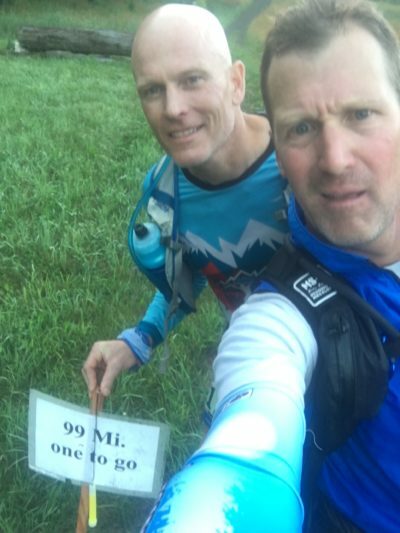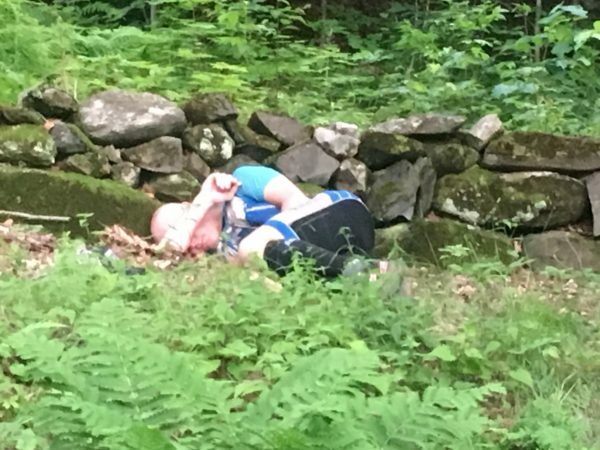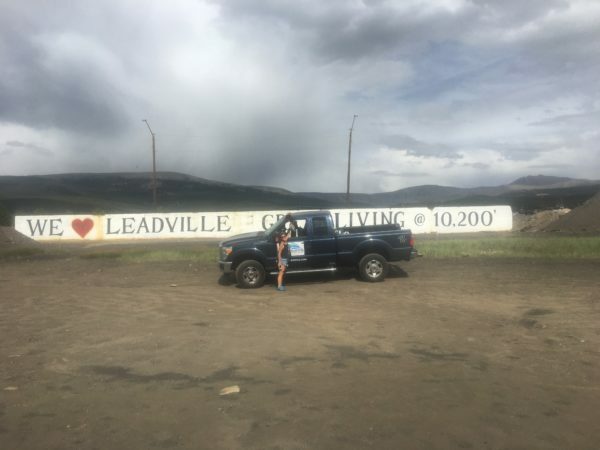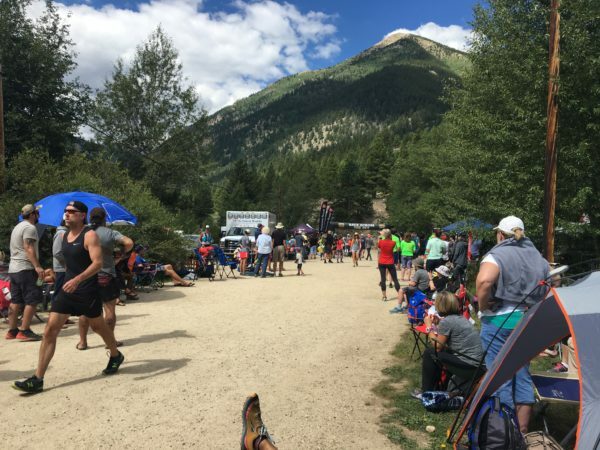“One who fears failure limits his activities. Failure is only the opportunity to more intelligently begin again.” ~ Henry Ford

This summer, I embarked on an attempt to complete the Grand Slam of Ultra Running: 1) Western States 100, 2) Vermont 100, 3) Leadville 100, and 4) Wasatch 100.
I made it 40 miles into Leadville 100, and my journey along the Grand Slam ended.
I’ve been asked this a lot recently: “What happened at Leadville 100?”
The simple answer is that I DNF’d–or “did not finish,” or “did nothing fatal.”
But, I know those that ask me this question are looking for more than the obvious. As endurance athletes, we sometimes sugar coat these types of outcomes. In my case, I’ve explained that my result was a medical DNF. That said, it’s still a DNF.
I’m ok with that outcome for now. I own my result, and make no excuses.
So what happened?
The answer to that begins with Western States and Vermont 100, for a complete understanding of the summer as a whole.
Western States was a mental and physical battle to say the least. The toasty weather conditions and very recent loss of my coach Steve Pye played a factor. But, we managed to get to the glorious high school track before the cut off.
That’s the cake.
Running mountain 100’s has a way of exposing the limiters of our bodies and minds, as I learned–repeatedly–in the past few months and years. Running in the Grand Slam of Ultrarunning exposes the soul to the core.
A few weeks after WS100, I toed the line at VT100 for my fifth consecutive attempt at a finish. Every finish after the Western States finish was really icing on the cake. I still feel that way about this attempt of the Grand Slam, as I barely made it to the starting line at WS this year–mostly because of how challenging I found WS to be this year. It was the longest battle of my life–or so I thought. (You can read about the Western States story here.)

Round 2
At Vermont 100, the first 50 miles went well and I felt solid until just past the half way aid station. At some point not long after, my GI system slowly seemed to get possessed with a monster wanting to stop my progress.
I fought this monster and used every tool I had in my toolbox to fix it. But it fought back just a little bit harder, and I puked for the entire second half of the race. I battled deeper than I ever wanted to for a 500 mile buckle finish.
My pacer and crew Eric Schrading was on point as always. Although I could see in Eric’s eyes a few moments along the way he knew I was deep in the hurt locker, and finishing was not going to be pretty–or maybe not happen at all.
Uncertainty was creeping in, and we punched its ugly head for hours upon hours.
I was running with uncertainty. Could I keep moving with no calories or hydration for such a long duration? I’ll spare you the details but “Pukefest 2017” has a nice ring to it.
I made uncertainty my partner during this time, and after a while, we became friends. We would finish or I would be taken away in an ambulance.
I had come too far to let the mountains wring the quit out of my body and mind. We finished in the early morning hours in the sunlight. I’ve run this race in under 20 hours in the past. Yet, this time it took me 27 hours this year. That puts the scope of the “Pukefest” into perspective.

Round 3
After Vermont, it was time for Leadville 100, with a starting line at 10,152 feet above sea level or 2 miles high. Talk about unknowns! I had no idea how the altitude would affect me, as I’d never spent any duration at that high of an elevation.

Not long after the start of Leadville 100, somewhere around 2 or 3 miles in, I looked at my HR. It was high, much more so than normal–by 30 beats.
It’s just the altitude, I thought. It will settle down.
But it didn’t. So I slowed down my pace even more–almost walking to force my HR to drop. That did not work. So, I walked a bit, and even with walking, my pulse was 10bpm above where I’d normally run a marathon.
I thought to myself: This isn’t sustainable. What do I need? What do I have?
I reviewed my hydration and fueling. They were in check–but I was dealing with a new experience, and there wasn’t much else I could do. I was living with uncertainty again.
Stay controlled and go slower than I think I can.
Then, a little headache creeped its way into my temple. The gradual, minor pain progressed into a constant, thumping pain. Then, I began to feel as if I had too many beers.
The dizziness crept in next, and my mobile dexterity started to get out of whack. I had to be extra cautious to avoid falling, as I found myself stumbling on even clear sections of single track.
When I came through the first crew aid station, around 13 miles into the race, I did not let Maria know how I was feeling just yet. I was hoping the symptoms would pass. Sometimes during endurance events, you feel bad for a bit and then you feel better. I was hoping the headache and dizziness was just a temporary situation.
At the next crew aid station, around 27 miles into the race, I stopped and sat down. This time, I told my crew, which included Maria, my parents, and our friend Alexa, how I was feeling. As I recall, they said my physical and mental state was okay, and encouraged me to keep moving along.
I found myself leaving the crew aid station reluctantly. Not long after, I found myself unwinding progressively. I was having more and more difficulty with easy tasks. My eyes felt like they were rolling; they were unfocused and blurry. My head continued to thump, louder and harder still.
Simply walking was becoming more difficult.
Get to the next crew aid station and we can reevaluate, I thought.
Time went slowly, and then even slower still. My speech slurred. Fellow runners asked: “Are you okay?”
I was conscious and understood what was going on, but could not control how I felt or my movements. I couldn’t focus. My vision blurred, my limbs didn’t work. My head pounded.
My. Head. Pounded.
Finally, I reached the Twin Lakes crew handler aid station at mile 40. I was 7.5 hours into the race.
I saw Maria first. She said, “You look good!”
I gave her a doubtful look. “We need to have a discussion.”

Maria led me to where the rest of the crew was and I sat down, hoping things would come into focus – and I don’t just mean my vision.
I told my crew something was not right. While Maria sat with me, and ran through a series of questions to check the basics, my mother and Alexa went to grab a medic, who could evaluate my situation. We all knew what was happening was very likely altitude sickness. What we didn’t know was whether that was a show stopper or not.
The medical staff performed some tests to diagnose my symptoms, most of which were similar to the types of tests police officers might give someone who they suspect of drunk driving.
He asked me to walk a straight line, heel to toe.
Fail.
He asked me to touch my nose and then touch his finger.
Fail.
He asked me about the duration of my headache and the blurred vision.
Fail.
After the tests and the questions, he recommended that I withdraw from the race.
Fail. Fail. Fail.
I had yet to climb up Hope Pass, which is the highest point of the race, and that meant that the chances of my symptoms improving were near next to zero. The chances of my symptoms worsening were almost 100%. He explained that altitude sickness can cause brain swelling, along with many other long term issues or even possible death.
In my heart, I knew my race and attempt at the Grand Slam were over. If nothing else, I was done from not being able to focus my vision. I can deal with headache and would grind through the miles, but I needed to be able to see to get this done.
So, we made the decision to withdraw and pull from the race. The Grand Slam journey was over.
I’m sharing this experience not because I want sympathy. I’m sharing this story because I want everyone reading this to know that somethings shit goes wrong. And, you have to acknowledge when that “wrong” is worth battling – or not.
I DNF’d. I’m not happy about it. But, I know it was the right call.
I like doing things that take me into uncertainty. To me, that is living. I wasn’t certain I could finish Leadville on this day. And, I didn’t. But, I will go back and make Leadville 100 right some day. I need to do that for myself. I accept the failure of 2017, and thanks to what I have learned, I will begin more intelligently when the day comes to return and finish what I started.
Congratulations to all 2017 Grand Slammers! See you in the mountains, on a trail someday soon.
Thanks to all who supported and helped along this journey.
